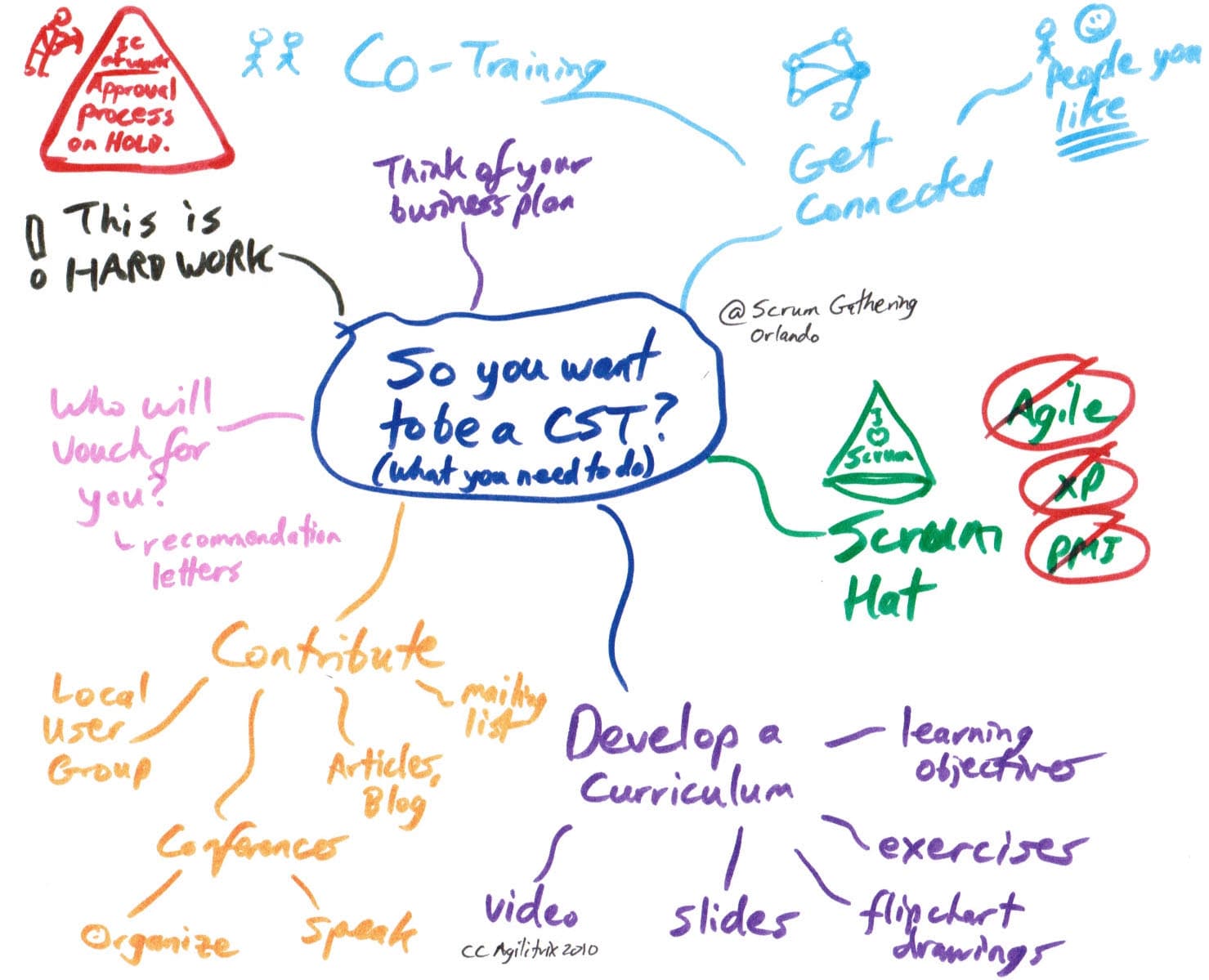There was a really good session at the Scrum Gathering’s Open Space on some of the challenges around the CST application process.
What I want to share here is some general thoughts on what is required to be a Certified Scrum Trainer that I noted during the open space session. This is only an excerpt on how to succeed.
(Part 4 of 5 blogs on the Scrum Gathering in Orlando)
Caveat: There is a Scrum Alliance Improvement Committee working out the new process so this is an informal look at some considerations.
See mindmap below.

It is important to get connected so that people know who you are. If you are considering co-training, find people you like. (N.B. There was some discussion of dropping Co-training requirements so you’ll have to stay tuned on this.)
What you teach when you are CST is your business, however, the evaluation process is based on you wearing your scrum hat. Not your Agile hat. Not your XP hat. Not your PMI hat. Does this mean I need to show a flock of self-organizing geese? Is it OK to share the Agile manifesto? I still don’t know the answer to these questions.
As a CST you will need to develop a curriculum with learning objectives, exercises, etc. There is no official training material that you can use as a baseline – every CST is expected to author training material.
It is important that you contribute to the Scrum Community. This can take the form of organizing a local user group, a conference. Public speaking and publishing articles and blogs is relevant as well.
The big thing I got out of this session is that no one is going to hand you the CST designation because you know Scrum and have run training sessions. Becoming a CST requires excellence and hard work.
You may also want to check out Tobias’s blog posts: So you want to be a CST?, Becoming a CST and Scrum gathering day zero for an informal perspective.
See also my post on becoming a CSC.


